

Air audits determine the actual air demand and evaluate the efficiency of use of compressed air in an operation. Air audits can determine the appropriate size needed, evaluate the need for a VFD/VSD compressor, identify inefficiencies in piping design and ultimately optimize usage.
Industrial facilities often depend on compressed air systems to power essential equipment. In fact, compressed air is almost as important as electricity for many industrial applications, but compressed air is also very expensive to produce if the system is not design and manage properly.
Many facility owners and managers often searching for ways to increase profit margins and decrease costs by improving efficiency at their facilities. They scrutinize their boilers to try to improve efficiency slightly or install more efficient air conditioning equipment. However, they often overlook the most expensive utility for their plant “the compressed air system”. This neglect can be very costly, especially in terms of energy efficiency.
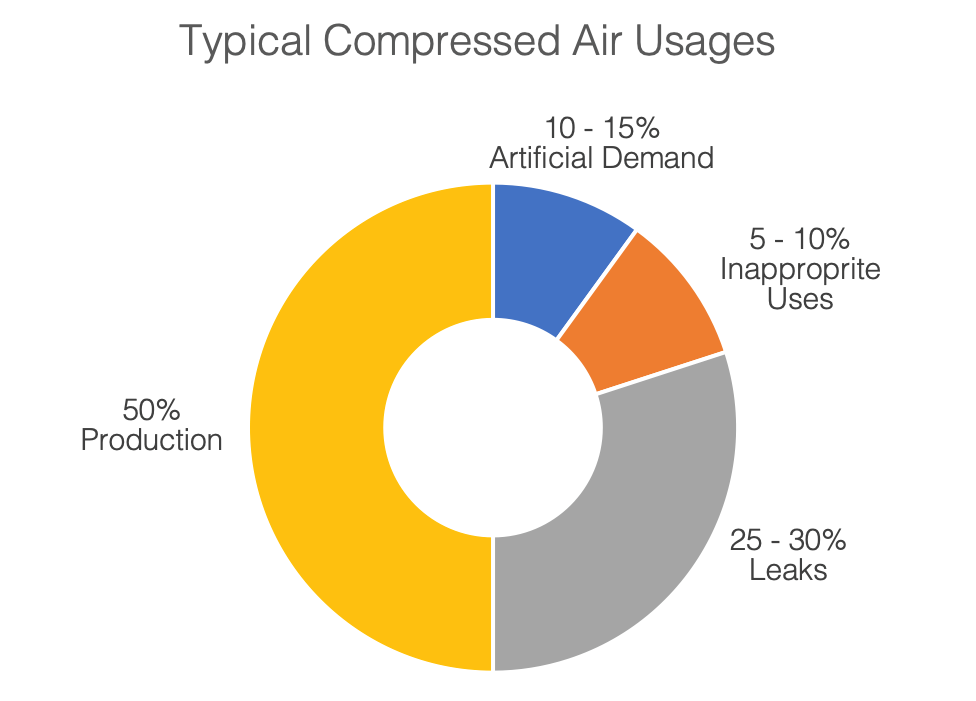
The U.S. Department of Energy has estimated that as much as 50% of the energy used to power air compressors is wasted. Only 50% of the compressed air produced is appropriately utilized.
A properly conducted compressed air audit can identify these inefficiencies and others. A compressed air system may have many leaks, compressor not appropriately sized or undersized piping. The air pressure may be set at too high a level for a specific task. Or there may be other fixable issues contributing to the high energy costs that come with operating your system.
According to the Only 50% of the compressed air produced is appropriately utilized based on averages. The remainder is lost to:
The Chart beside shows the relationship between compressor kW and energy cost. A 75kW (100hp) compressor requires about RM210,000 in annual electrical costs at 35 cents per kWh with operation of about 8000 hours per year.
To judge the magnitude of the opportunities that exist to save electrical power costs in your compressed air system, it is important to identify the electrical cost of compressed air.
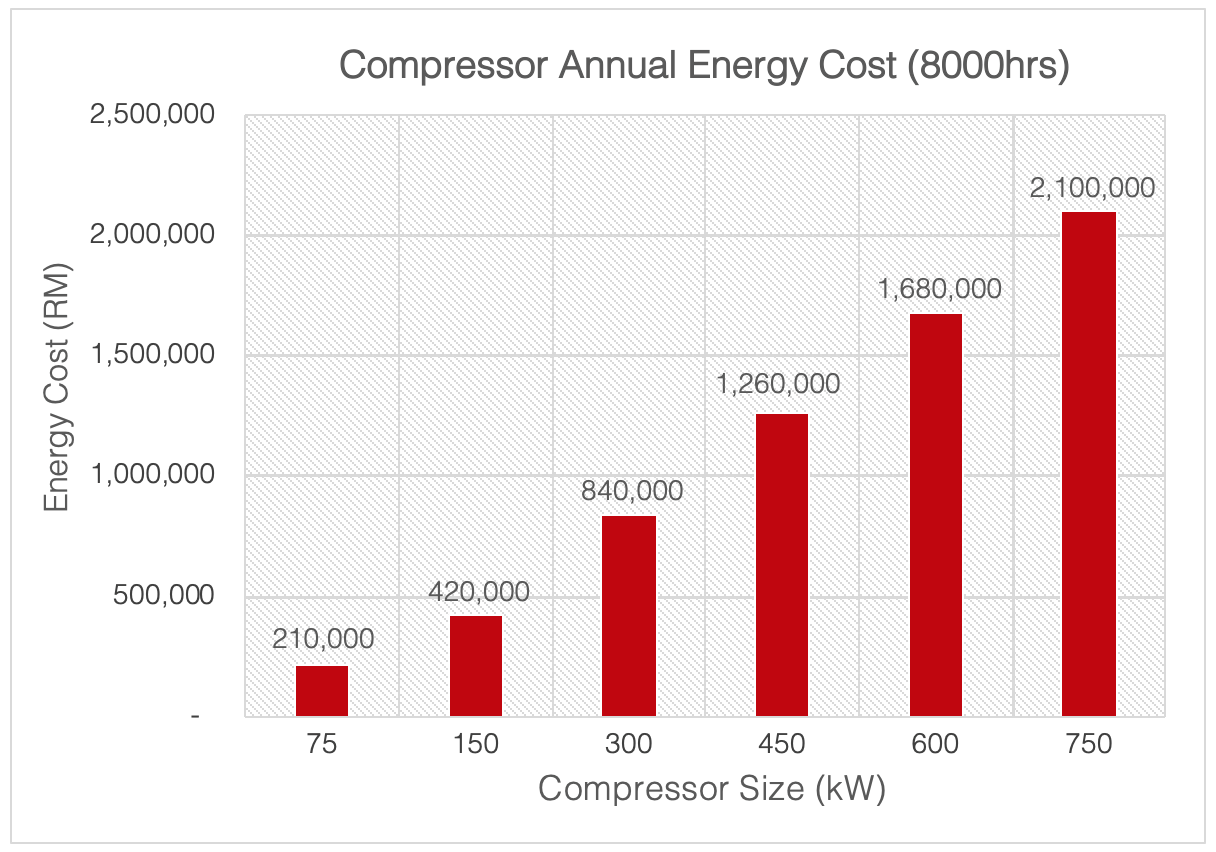
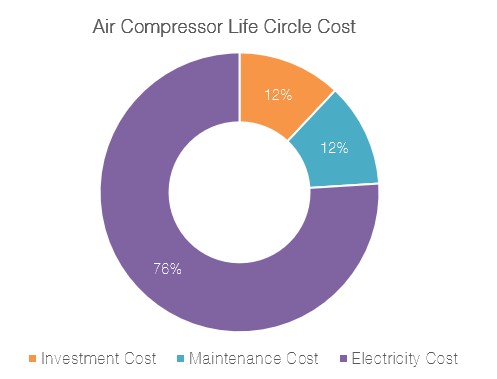
When looking at the overall costs of a typical compressed air system, the biggest costs are caused by the electrical power consumption but not by the investment or maintenance of the system.
With average 76% of the cost of a compressor due to energy use, significant cost savings will be made by improving energy efficiency, as well as the added benefits of improving the performance of your system and reducing your manufacturing plant ‘carbon footprint’.
Compressed air audits can be simple or complex, and are developed in consultation with our clients while evaluating their specific needs. Often, a simple ‘walk the line’ audit can identify opportunities for savings that can be acted upon quickly, easily and at little or sometimes zero cost.
For those that wish to take their compressed air system efficiency a step further, we also offer more comprehensive audits as following to get the most out of your investment and reap the benefits of energy savings hidden in your system.
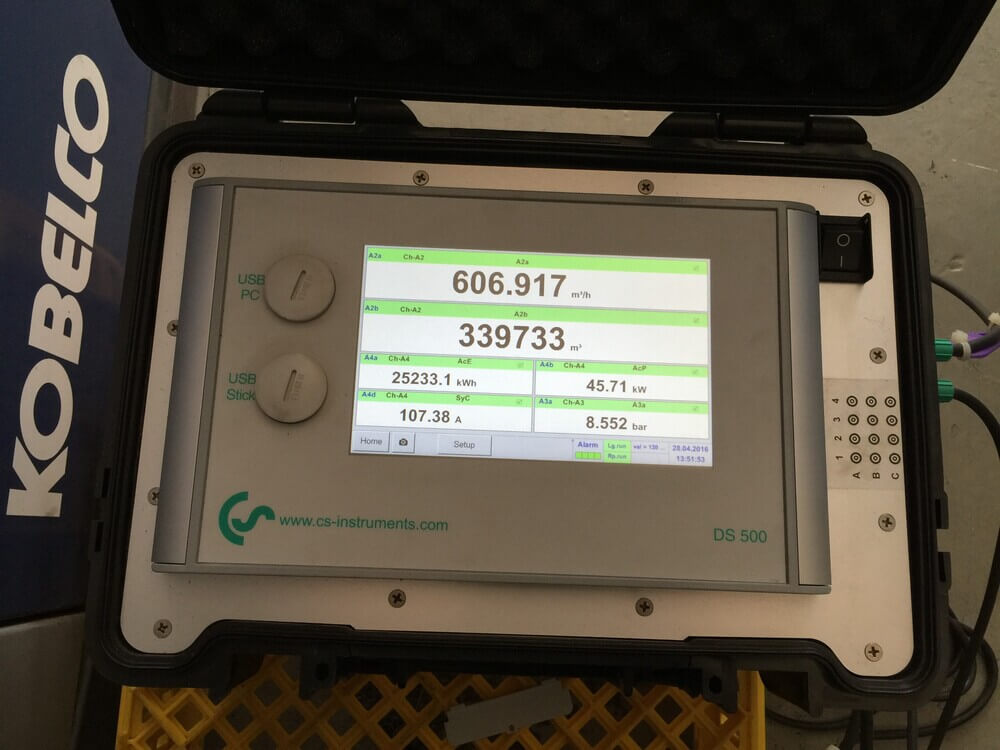
Baseline Measurement / Data Logging
Our baseline measurement incorporate multiple sensors to collect and store information relating to a system’s pressure, temperature, pressure dew point and flow rate. Our current and voltage logger enable true power to be accurately measured, with power cost calculated using these figures. The latest software technology allows us to analyse, chart, graph and prepare audit report. Simulation wizards allow us to show you cost saving by simulating the use of different compressor configurations, both fixed and variable, against your existing compressor volume.
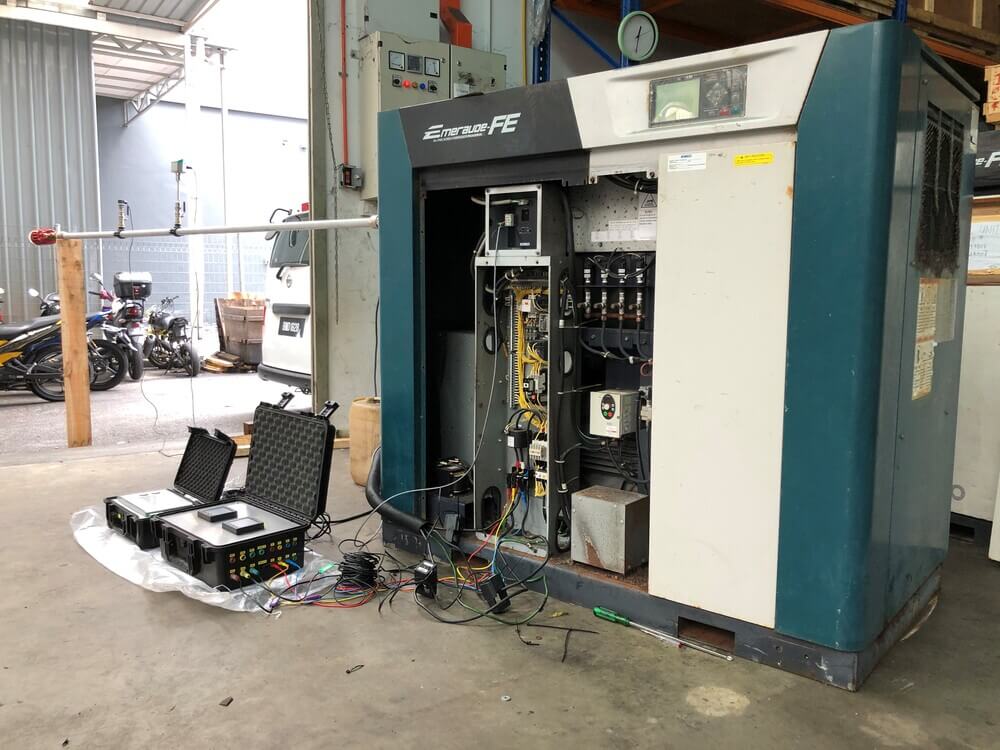
Compressor Performance Test
Due to ageing of the compressors and inherent inefficiencies in the internal components, the free air delivered may be less than the design value, despite good maintenance practices. Sometimes, other factors such as poor maintenance, fouled heat exchanger and effects of altitude also tend to reduce free air delivery. In order to meet the air demand, the inefficient compressor may have to run for more time, thus consuming more power than actually required.
Air Leak Detection
Often a big factor in improving compressed air systems efficiency is the reduction of waste and inappropriate use of compressed air. The average plant wastes between 20 and 30 percent of their compressed air through leakage. In addition to this, 10 to 15% of the remaining compressed air that makes it to the end use is used inappropriately in ways that can be better supplied by another more efficient energy source
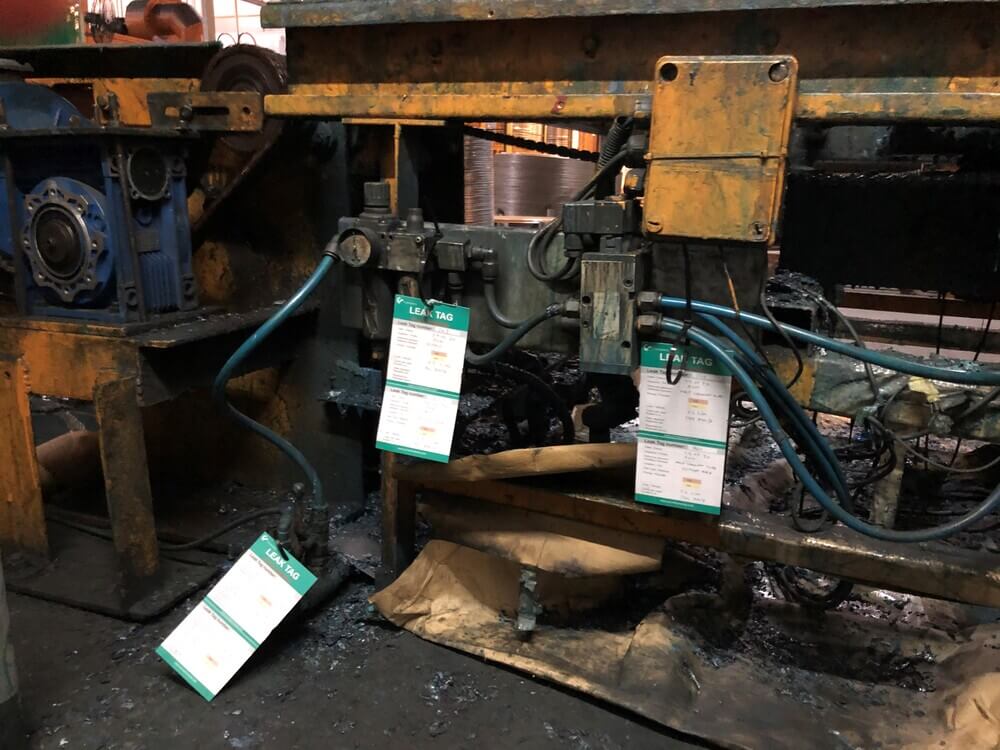
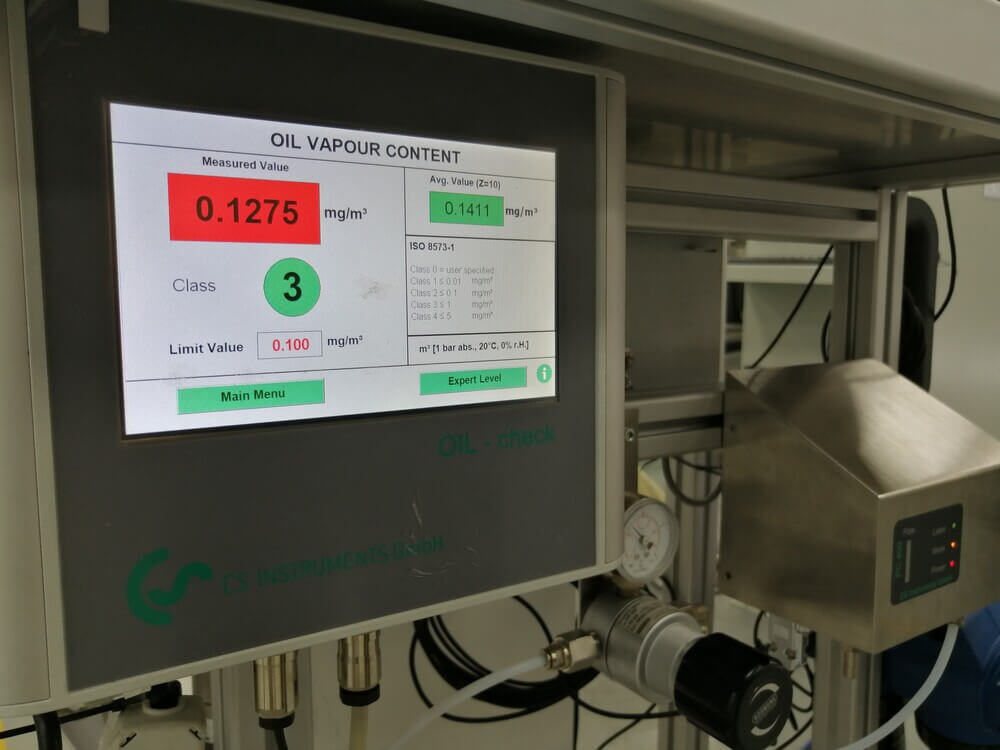
Compressed Air Quality Test
Compressed air quality testing determines that the compressed air being supplied to industrial processes is free of impurities that might damage equipment or alter the quality of finished products.
This is especially important for industries such as food and beverage and pharmaceutical if the air comes into direct contact with the product or indirect contact with the packaging.
The contaminants routinely tested for are water, suspended particles, and oil residue.
If your industrial facility utilizes compressed air, a system audit may uncover ways to improve productivity and your bottom line. A comprehensive audit conducted by an experienced professional can root out hidden inefficiencies. Depending on the audit results, it may contribute almost immediately to the following:
For example, a compressed air audit can determine whether the air pressure is accurately calibrated for a specific task. If the air pressure is higher than what is needed, the energy being used to compress the air is being wasted. A properly conducted audit can determine whether or not the optimal equipment is being used, and to what degree solutions such as implementing automated controls will help.
Our team is on standby, ready to assist you with compressed air optimisation solutions to drive the productivity of your operation.
Our ultimate goal is to reduce compressed air usage as much as possible, then matching supply with demand to create a truly efficient system